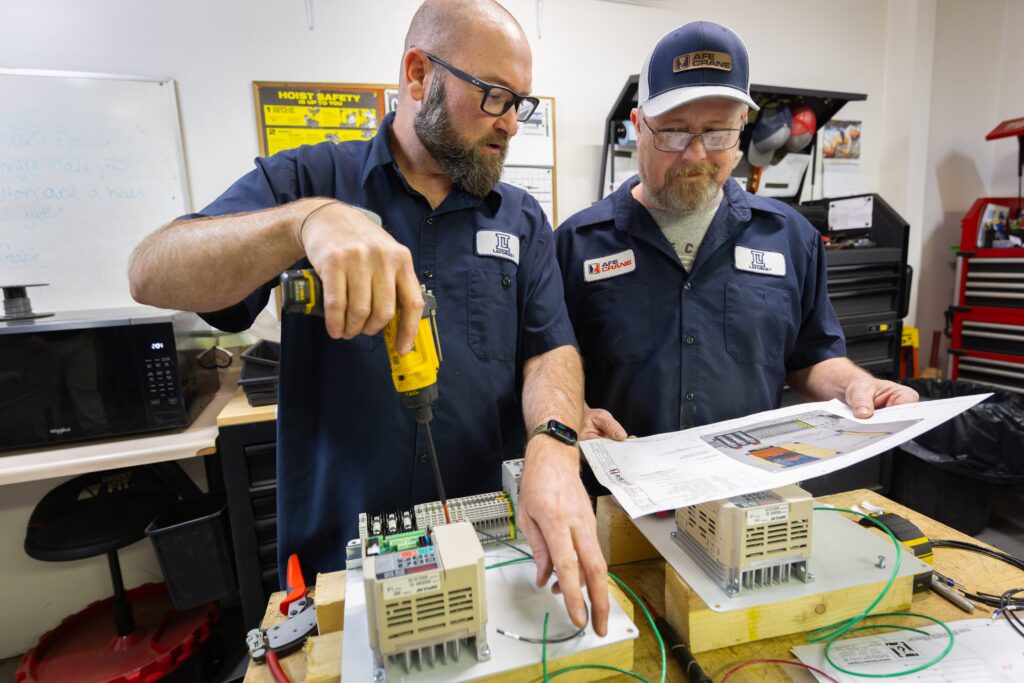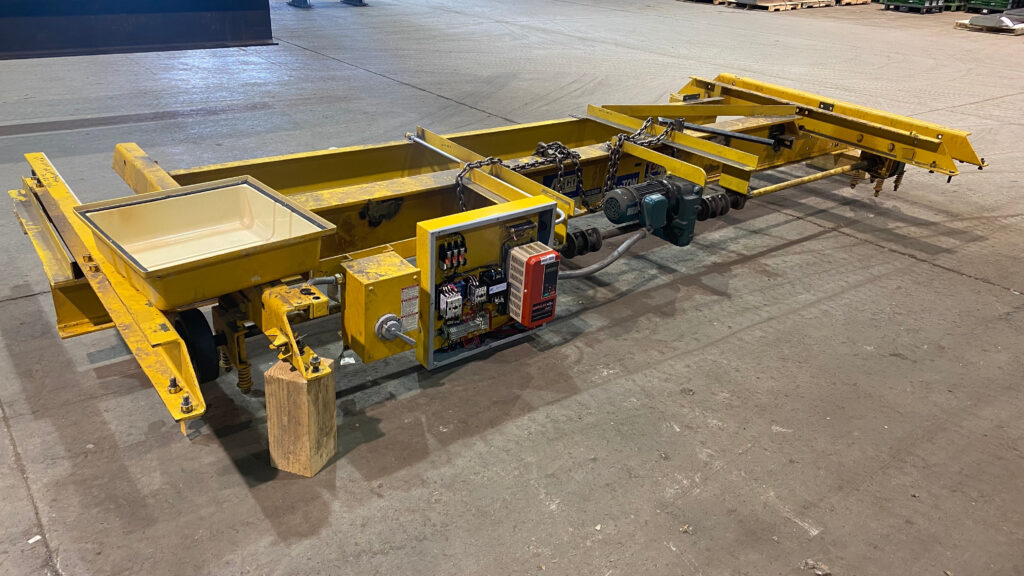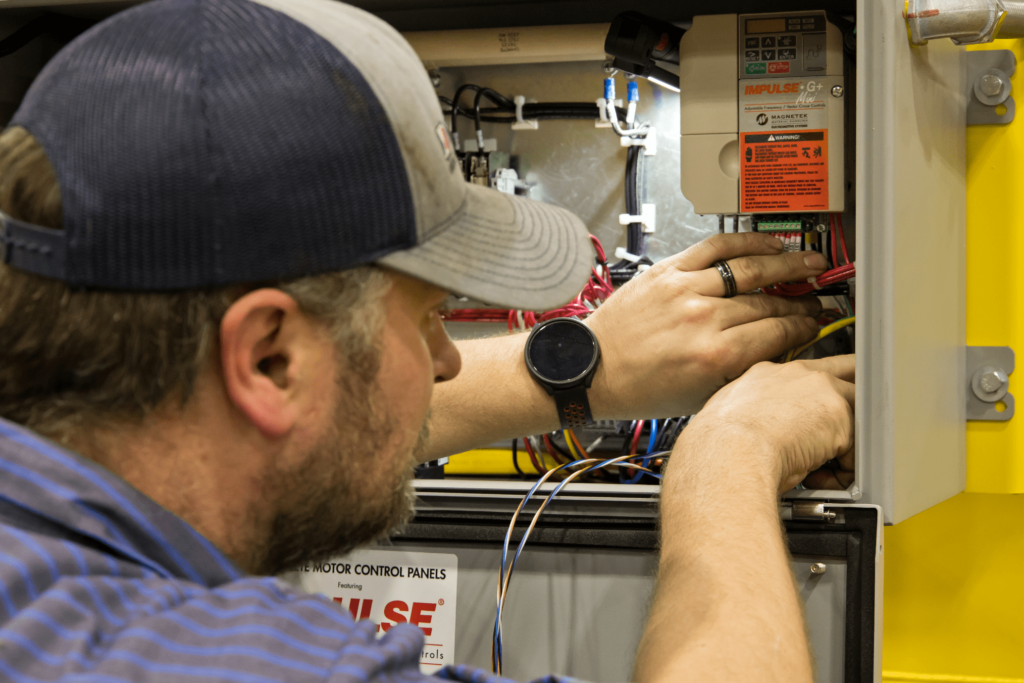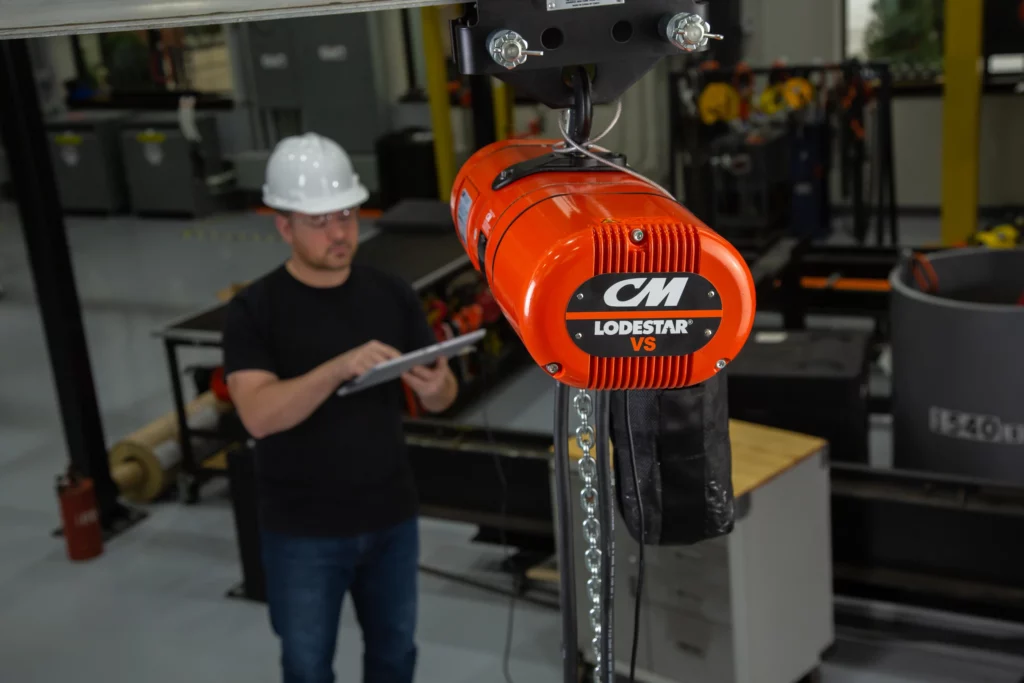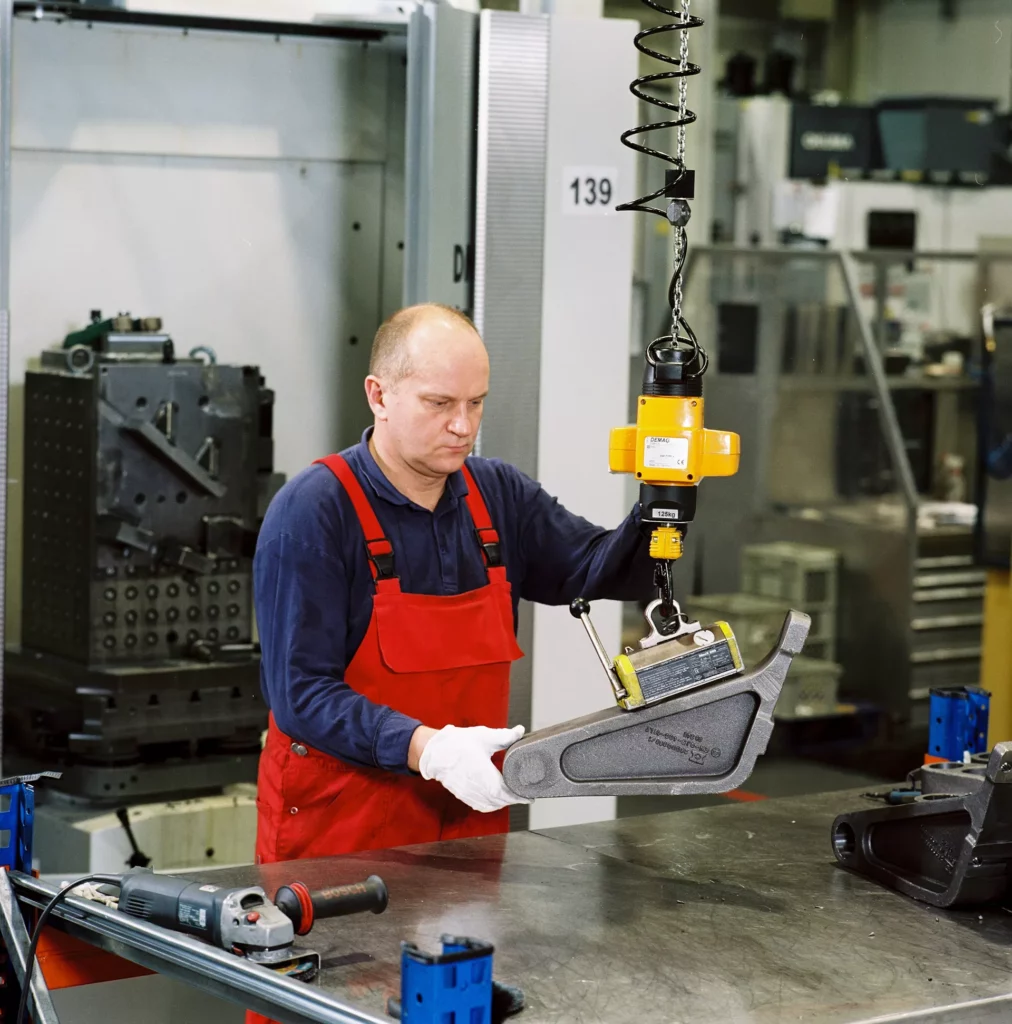What Are Telescoping (or Projecting) Bridge Cranes?
Telescoping bridge cranes, also known as projecting bridge cranes, are a specialized type of underhung bridge crane designed to extend and retract beyond the span of the crane runway. This unique telescoping feature allows the crane to reach areas that traditional bridge cranes cannot access, making them highly versatile in industrial and manufacturing environments.
By incorporating a retractable bridge beam, these cranes can extend their hook coverage beyond the normal limits of the runway system. This capability enables operators to pick and place loads outside the standard bridge span, transfer materials between adjacent crane systems, and optimize workflow in facilities with space constraints or complex layouts.
How Do Telescoping Bridge Cranes Work?
The operation of a telescoping bridge crane is similar to that of a standard three-motion bridge crane, with the addition of a telescoping beam mechanism. The system is designed for intuitive control and smooth operation, allowing operators to quickly adapt to its functionality.
The telescoping beam and the hoist trolley are controlled using a single set of buttons. When the operator presses the button, the trolley moves along the bridge until it reaches the end of the telescoping beam. At that point, the telescoping beam extends to provide additional reach. The process is reversed when retracting, ensuring predictable and straightforward operation. This seamless control method enhances usability and reduces the learning curve for crane operators.
Increased Efficiency and Productivity
One of the primary benefits of telescoping bridge cranes is their ability to enhance efficiency and productivity in material handling operations. Traditional bridge cranes are limited to the coverage of their runways, often requiring additional equipment or manual repositioning to access certain areas. With telescoping bridge cranes, operators can reach confined spaces or areas obstructed by machinery without requiring additional lifting solutions.
By utilizing the extended reach of the telescoping beam, operators can position loads precisely where they are needed, reducing downtime and eliminating unnecessary material handling steps. This streamlined workflow leads to improved productivity, fewer disruptions, and optimized use of available floor space.
Telescoping bridge cranes also enable seamless load transfers between adjacent crane systems. By extending the beam into the hook coverage of a neighboring crane, operators can efficiently transfer loads between separate crane bays. This inter-system material transfer capability significantly enhances operational flexibility in facilities that require frequent load movement across different work areas.
Enhanced Safety Measures
Safety is a critical consideration in any industrial setting, and telescoping bridge cranes are designed with features that enhance workplace safety while improving operational efficiency. The ability to extend beyond obstacles reduces the need for workers to manually reposition loads, minimizing the risk of workplace injuries caused by unnecessary handling or improper lifting techniques.
Many telescoping bridge cranes are also equipped with advanced safety features such as no-fly zones, collision avoidance systems, and load monitoring technologies. These features help prevent accidents by automatically detecting potential hazards and adjusting crane movements accordingly. Additionally, the controlled and predictable extension of the telescoping beam ensures stable and precise handling, reducing the likelihood of load swings or unexpected shifts.
Conclusion
Telescoping bridge cranes are an invaluable addition to any industrial facility seeking to maximize hook coverage and streamline material handling processes. By extending beyond the crane runway span and facilitating inter-system load transfers, these cranes provide an efficient and safe solution for handling materials in complex environments. Their ability to access previously unreachable areas enhances workflow efficiency while minimizing risks and reducing operational bottlenecks. As industries continue to evolve, the versatility and functionality of telescoping bridge cranes make them an essential tool for improving productivity and maintaining a safe and efficient workspace.

